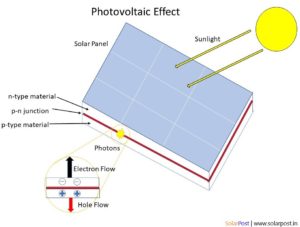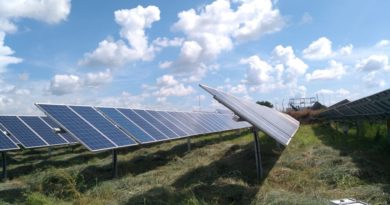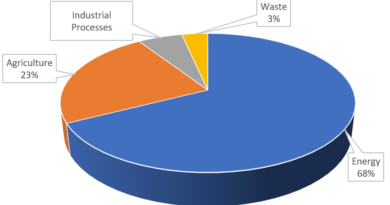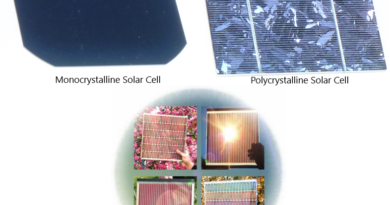What is Solar Photovoltaic?
Solar Energy works by converting the sun’s energy into electricity. A solar cell which is also known as photovoltaic (PV) cell converts sunlight into electricity. The process by which voltage is generated in a solar cell is known as “photovoltaic effect”. The photovoltaic effect was first discovered by Edmond Becquerel in 1839.
Sunlight is made of photons and the energy carried in each photon depends on the photon’s wavelength. A PV cell is made of two different types semiconductors (e.g. silicon, Si), n-type and p-type, that are joined to form a p-n junction. When sunlight fall on a solar cell, then the associated photons may get reflected by the cell, passed through the cell or get absorbed by the semiconductor material. The photons which are absorbed by the semiconductor material contribute in the generation of electricity. This happens because corresponding to each photon absorbed by the material, an electron (carrying negative charge) gets displaced from the material’s atoms. The solar cells are designed and manufactured to make the front surface of the solar cell more receptive to the displaced or free electrons so that these free electrons move to the surface of the cell.

When these free electrons move toward the front surface, a difference of electrical charge is created between the front and the back surface. This difference results in creation of voltage potential in the solar cell.
Solar Cells are electrically connected to form a Solar PV Panel or Module. Size and the capacity of the solar panel depends on the specifications and number of solar cells in it. Solar PV modules are electrically connected to form Solar PV array. The electricity produced by PV Cell is DC (direct current). This DC electricity can be used in devices which run on DC electricity or can be converted into AC (alternating current) electricity by inverter. Most of the commonly used devices run on AC electricity.
To get the optimum electricity generation from the solar panels, they should face the sun directly. For this purpose, the mounting structure for solar panels and arrays have tracking system which move the array to directly face the sun. However, if tracking system is not available then the panels are fixed in a position which faces directly south if the place where it is being installed is in northern hemisphere or directly north if the place is in southern hemisphere.
One thing which is important to note while talking about solar cells or solar PV energy is the efficiency by which the solar cell convert sunlight into electricity. The efficiency varies by the type of semiconductor material and the PV cell technology used. On an average the efficiency ranges from 5 to 17% for most of the commercially available PV modules.




Pingback: India’s Journey in Solar PV - SolarPost
Pingback: Types of Photovoltaic Cell - SolarPost
Pingback: Solar PV Panel - SolarPost
Pingback: Floating Solar - An Interesting Renewable Energy Opportunity - SolarPost
Pingback: Solar Energy – 南国的葡萄园